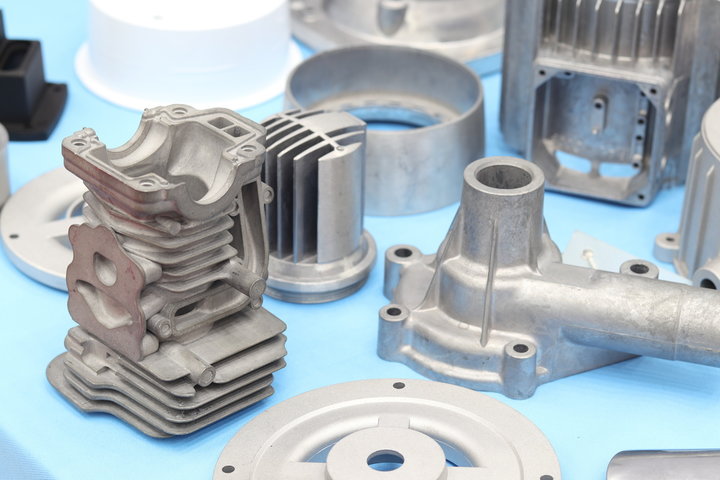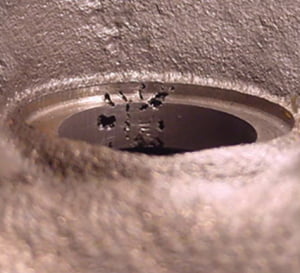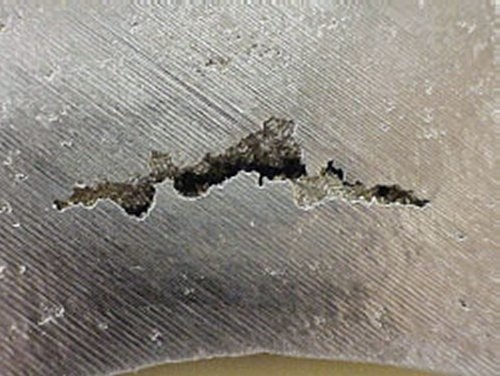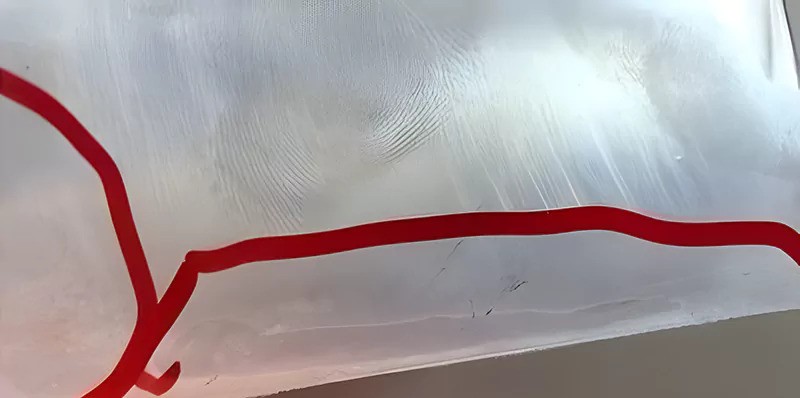High Pressure Die Casting (HPDC) is a common industrial process to mass-manufacture intricate metal parts. Yet, some casting defects may emerge within the process, consequently compromising the quality of the finished product. This paper outlines the main manufacturing defects in HPDC, their causes, how they can be detected and how they can be avoided. Through knowledge of these defects and dealing with them, manufacturers will improve the ease of operation and reliability of die casting processes.

What is High Pressure Die Casting (HPDC)
Die casting under high pressure (HPDC) refers to a category of metal casting process wherein molten metal is injected into a steel die cavity under high pressure. The die cavity is made out of two halves of hardened tool steel which have been shaped and work like a mold enclosure. The molten metal is usually nonferrous in nature, for instance, aluminum or zinc, and is injected at high pressures which may range from 1500 psi to 25400 psi. This pressure is well above the vapor pressure of the molten metal ensuring that the die cavity is filled fast and properly and then allowed to set, thereby obtaining a cast component very similar to the final product shape with very good surface quality and precision.
Process of Die Casting
The process of die casting can be broken down into various stages which include the following:
Die Preparation: The manufacturing of steel dies involves cleaning and lubricating the dies and heating them to a specified temperature.
Melting and Injection: The alloy ingots are charged and melted in a furnace and then held in a shot sleeve of the die casting machine. Pressure is then applied with a plunger to force the liquid metal swiftly to the die insert.
Cooling and Solidification: Cool this liquid metal as soon as possible and solidify it in the die block, which is pre-determined in the shape of the hollow cavity inside the mold.
Ejection: At times, the die halves open after the part has cooled and solidified, and the cast part is ejected from the cavity using ejector pins.
5. Trimming and Finishing. The produced part is cut from excess metal (flash) and is subjected to any other secondary finishing processes like machining, surface treatment or painting.
What Are Casting Defects?
The process high pressure die casting (HPDC) is not without its manufacturing defects, which could be as a result of inadequate control of the process, the design of the die or the materials used. Some of these common manufacturing defects associated with HPDC include gas porosity, shrinkage porosity, inclusions, cold shuts, soldering, blisters, and flow marks. These kinds of defects often result in lower mechanical properties, bad surface finishing, and premature failure of the casted parts. In the following sections, these common HPDC defects will be elaborated in detail, their causes and prevention and detection measures will be discussed, in order to enable the manufacturers to produce quality die cast components.
Types of Manufacturing Defects in HPDC
Porosity in Die Casting Manufacturing
Porosity is described as the degree of presence of small openings or spaces that exist within the component often referred to as the die-cast part. Such voids may compromise the structural soundness of the structure in question thereby decreasing the strength and sealing abilities of the component at hand. There are primarily two forms of porosity defects observed in pressure die-casting (PDC) techniques:

Gas Porosity
It takes place when air or gases are entrapped in the liquid metal while it is injected, hence resulting in the formation of round or spherical cavities
It can be ameliorated by optimizing the design of vents and the parameters of injection
Also, keeping the surface of the mold clean and dry without any moisture, grease or oils helps in reducing gas porosity deformities.

Shrinkage Porosity
Due to the shrinkage of the metal that occurs in the process of solidification, irregular-shaped cavities known as spongy voids generally appear especially about the thicker sections of the cast.
By improving the gates and risers system and regulating the cooling rate this can be lessened.
It is essential to address the issue of sink marks and avoid shrinkage pores when using CAE to modify the die cast part for thermal balance and uniform wall thickness.
Inclusions in Die Casting Manufacturing
Inclusions are extraneous materials that become trapped within the die casting process, and are formed during the HPDC cycle. These materials are classified as metallic and non-metallic inclusions depending on their nature.
Metallic Inclusions
Usually made up of oxides, intermetallic alloys, and other metals
Caused by either the molten metal, die lubricant or the machine pieces
If melt preparation, filtration and machine maintenance are done well, it is possible to avoid metallic inclusions
Non-metallic Inclusions
These may include ceramic dust, sand or any external material
Generally come up due to the use of polluted materials, or uncareful management
Non-metallic inclusions can be avoided by quality assurance of the raw materials and cleanliness of the die washout process
| Inclusion Type | Composition | Sources | Prevention Methods |
| Metallic | Oxides, intermetallics, metal particles | Molten metal, die coating, machine components | Melt preparation, filtration, machine maintenance |
| Non-metallic | Ceramic particles, sand, foreign matter | Contaminated raw materials, improper handling | Strict quality control of raw materials, clean die casting environment |
Cold Shuts in Die Casting Manufacturing
Cold shuts are observed as linearly occurring discontinuities in die cast parts where two flows of metal do not join fully during the various metal die casting processes which involve the application of high pressure in the die. These failures pose great problems in HPDC manufacturing, adversely affecting product strength and the surface finish of casted products.
Causes of Cold Shuts
In die casting, the most important cold shut formation can be attributed to a number of factors, which are interrelated:
The temperature of molten metal is not high enough and solidifies very fast
The injection speed is not high enough causing wrong metal flow
The gating system is deficient resulting in uneven filling of the cavity
Venting is poorly placed so there are trapped air pockets
The die cavity does not have an even temperature throughout
Injection pressure parameters were not properly set during the injection stage
Impact on Product Quality
The presence of cold shuts significantly affects die cast component performance:
Considerable weakening of mechanical properties due to lack of fusion
Lower resistance to external loads due to higher tendency to cracking
Deficient surface quality tarnishing the appearance and usability of the product
Increased pressure leakage in the key components of the die
Increase in the risk of failure of the complete system as well as the life of components
In service conditions of the components, certain failure areas are visible under load bears
Flash in Die Casting Manufacturing
Flash formation in high pressure die casting occurs in the form of extra metal overflow between the two halves of a die during the phase of injection leading to undesirable thin protrusions which resemble fins along the junction of die cast parts. This defect which is quite often found in die castings made by means of high pressure die casting not only affects the dimension but also incurs extra costs on finishing processes and shortens die resistance.

Reasons for Flash Formation
When the surfaces of dies are worn or damaged and do not correctly match along the parting lines, this can often trigger the presence of flash especially with a low clamping pressure resulting in the dishing of the die under injection pressure. This scenario worsens when the injection pressure is so high that the die closure system fails or when it is affected by warpage causing the parting lines to be compromised. Several manufacturing drawbacks such as poorly aligned die parts, surfaces of die cavities that get scratched during use, and lack of stiffening ribs for die inserts can all lead to excessive bending when pressure is applied and thus cause flashing to worsen.
Methods to Minimize Flash
Regular die maintenance and repair
Ensuring proper clamping force
Optimizing injection parameters
Incorporating flash traps in the die design
Flow Marks in Die Casting Manufacturing
What are Flow Marks
Flow marks are visible in certain wavy or spiral patterns on the surfaces of die castings especially near the gate portions and over the metal flow sections. Such imperfections in surfaces cause uneven patterns which follow the lines of solidification and are very prominent in thin wall regions and areas far away from injection points. In aluminum pressure die casting these surfaces generally create parallel lines, which act as a major drawback for the surface finish as well as the dimensional precision.
Factors Contributing to Flow Marks
Variations in the temperature of the metal are one of the most significant factors in the formation of flow marks. In these cases, viscosity changes due to overheating, while the cavity is still filled with molten metal, result in disturbed flow and surface discontinuities. Even minor differences in injection speeds, particularly in thin-walled sections, exacerbate the phenomena of flow marks by enabling metal to flow erratically. This is also related to many aspects such as:
Metal temperature lower than the range necessary for effective filling of the cavity
Gate velocity that causes excessive shear and resulting flow turbulence
Insufficient vents resulting in resistance to the material flow and general disruption of the process
Non-uniform die cooling leading to undesirable flow patterns and solidification
Changes in the thickness of the walls necessitating abrupt increase or decrease in the velocity of the molten metal
Ineffective positioning of the gates which results in uneven dispersal of metal
Blisters Die Casting Manufacturing
Blister defects found on die cast surfaces are geodesic shaped surface defects which occur after casting. In contrast to flow marks or porosity, these defects can also develop during heat treatment, or service, conditions giving rise to visible surface distortions as well as weaknesses within the structures themselves.
Causes of Blisters
Casting blister formation in dies comes mainly from trapped gases during solidification. Gas pockets are created from the oxidation of metal injected into the cavity which later turns to heat; lubricants that are meant to aid in ease of cast solidification also become gas at this stage. Inadequate removal of die-chemical decomposition products, moisture in the die pocket of the cavity, overuse of die sprays, and oxidation of metals while filling in the cavity are all among the primary factors that cause this defect. The occurrence of these problems is usually worse where die surface temperatures are elevated because it leads to more gas generation and further porosity increase during thermal exposure.
Prevention Techniques
Blister risk management in this regard would entail proper die temperature and lubrication systems management. Using automated die spray systems with controlled coverage ensures lubricant is applied uniformly without over gas generation whiles managing the die temperature. Addressing die cavity ventilation maintenance enhanced with surface cleaning measures and enclosure geometry design minimizes filling sector turbulence and gas entrapment effect considerably.
Misruns Die Casting Manufacturing
Incomplete Filling of Mold Cavity
A misrun or mis-run defect is defined as a defect from incomplete filling of the die cavity by the molten metal. Such defects occur in parts that are characterized by features that are missing or not fully formed. These casting defects are usually confined to thin section castings and regions of the dies farthest from the gates where the metal is already solidified before the filling of the entire cavity. The misrun effects are not only limited to dimensional inaccuracies of the parts; they frequently ruin also the mechanical properties and the surface quality of die castings.
Remedies for Misruns
Dealing with misrun defects is a problem that requires a focused concern of metal flow and temperature control. The die and metal temperatures must be kept in the process range optimal for the application while the gate positions need to be located appropriately to enhance flow patterns. Increased venting in troublesome regions, along with modified injection speed rates and changed wall thickness variations ensures filling of the cavity is achieved satisfactorily. Overfoes position adjustment and control during the process is also carried out for better performance of the casting process and minimizing misrun defects in high pressure die casting die.
Factors Contributing to Manufacturing Defects in the Process of Casting
The formation of manufacturing defects during the high pressure die casting process can be attributed to various elements. Appreciating these elements and addressing them properly however enables die casting manufacturers to effectively eliminate defects and enhance the general quality of their castings. Some of the important factors associated with the manufacturing defects in HPDC are discussed below.
Improper Die Design
Casting die manufacture is very important as far as the quality of final cast is concerned. An ill-designed die results in a number of casting defects such as:
Gasporosity: where gas is trapped due to poor venting or gas porosity design.
Coldshuts: The specific cause of these defects usually relates to a poor gating system where metal is slow or turbulent in flow causing cold shut defects.
Misrunners: Poorly designed risers and gates.
In order to avoid malfunctions with respect to die configurations, it is recommended that producers do the following:
Use proper design of the gating or runner system, so that metal is able to flow and air escape efficiently.
Provision should also be made for venting when injection molding is carried out to allow for the escape of any gases.
Apply die design simulation to the die designs and capture areas of concern before die production commences.
Incorrect Process Parameters
The success of the HPDC process heavily relies on maintaining the correct process parameters. Deviations from optimal settings can result in various manufacturing defects. Key process parameters include:
Melt temperature: If too low, it can cause cold shuts and misruns; if too high, it can lead to gas porosity and die soldering.
Injection pressure and speed: Insufficient pressure or speed can result in incomplete filling and misruns, while excessive pressure can cause flash and die wear.
Cooling rate: Uneven or inadequate cooling can lead to shrinkage porosity and warping.
To minimize defects caused by incorrect process parameters, manufacturers should:
Establish and maintain optimal process settings based on the alloy, part geometry, and die design.
Regularly monitor and control process parameters using sensors and automated systems.
Conduct periodic audits and adjust parameters as necessary to ensure consistency.
Metal Composition and Quality
The combination and quality of die-casting metal alloy has a lot to do with the causes of industrial defects. These problems of concern for die casting are those related to the composition and quality of metal, which include:
Impurities: Foreign materials present in the cast metal may form cores, inclusions or poor structure of the metal.
Composition variations: Extreme changes in the alloy composition may result in unpredictable shrinkage characteristics and modify internal flow of the material as well.
Hydrogen content: Gas porosity may be caused by an increase in hydrogen concentration within the molten metal.
In order to mitigate metal composition and quality problems, the following steps are recommended to manufacturers:
Obtain raw materials from recognized and reliable sources.
Install a rigid quality assurance system by way of inspection of materials received and their composition.
Apply melt treatments to the metal such as degassing by fluxing to purify metals and alter the hydrogen content.
Inadequate Maintenance of Die Casting Equipment
The timely care of die casting machines is very important in consistent production of quality castings. If not taken care of, some building defects can occur, such as:
Flash: The surfaces of dies that are worn out cause flash because some metal goes between the two halves of the die.
Soldering: A die can also have soldering where the liquid metal sticks on the die surface due to insufficient lubrication or cooling of the die.
Dimensional inaccuracies: Part dimensions may not be the same because of component wear or misalignment.
In order to eliminate or minimize the impact of defects associated with maintenance of the equipment, it is recommended that the companies:
Carry out a systematic preventive maintenance schedule for all of the die casting machinery.
Diligently check the wear on or damage to core, inserts, and other wearing parts, and carry out restoration work if necessary.
Control the internal and external cooling and lubrication of die surfaces in order to protect from soldering and excessive damage.
Conclusion
In conclusion, understanding and addressing common manufacturing defects in high pressure die casting, such as porosity, inclusions, cold shuts, flash, flow marks, blisters, and misruns, is crucial for producing high-quality parts. By identifying the causes of these defects, which include improper die design, incorrect process parameters, metal composition and quality issues, and inadequate maintenance of die casting equipment, manufacturers can implement targeted prevention and control measures. Minimizing defects not only enhances product quality and performance but also improves customer satisfaction and loyalty.
Ready to elevate your die casting quality? TEAM MFG's expert solutions and proven track record in precision die casting can help you achieve manufacturing excellence. Connect with us today to start your journey toward flawless production.
FAQs About Die Casting Defects
What are the most common defects in high pressure die casting?
Porosity, cold shuts, incompletes and surface defects such as blisters and flow marks are the most common stunning defects in high pressure die casting. These defects can occur because of some factors outside the casting process like temperature control or health and without sufficient exhaustion.
How do you control porosity defects in the die casting process?
Porosity defects in die casting may be averted by proper venting of the die, maintaining consistent melt temperatures and controlling the injection speed. Further, the right alloy should be used, and turbulence spewing the metal into the mold should be avoided to curtail margin proliferation.
What is the reason behind cold shuts in high pressure die casting?
Cold shuts are observed in high pressure die casting when the molten metal streams that are used to fill a profile do not completely join up. This may occur due to low melt temperature, poor injection speed, or excessive cooling of the die.
How do surface defects such as blisters and flow marks influence die castings?
Surface defects such as blisters and flow marks do not only affect the aesthetics of die cast parts but also their shape precision and physical characteristics. These defects may incur additional costs in additional finishing – for example, polishing or grinding – in order to achieve the required quality.
What are the major parameters monitoring which would help to minimize the casting defects in HPDC?
Casting defects in high pressure die casting can be minimized if process parameters die temperature, melt temperature, injection speed, and venting are well controlled. Keeping the die casting machine in good working order and utilizing superior quality alloys will also assist in the reduction of defects.



















